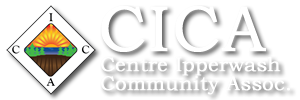Setting the historic record straight

 It is somewhat of surprising that after all the years since the Ipperwash Inquiry, people; locals and non don’t know the difference between the three pieces of property from Stoney Point to Kettle Point. People are not aware that the land that is now in the headlines is as ceded as is every other piece of land in Canada. If the First Nation people think Centre Ipperwash is part of their title, guess what, they believe your home is also part of that.
It is somewhat of surprising that after all the years since the Ipperwash Inquiry, people; locals and non don’t know the difference between the three pieces of property from Stoney Point to Kettle Point. People are not aware that the land that is now in the headlines is as ceded as is every other piece of land in Canada. If the First Nation people think Centre Ipperwash is part of their title, guess what, they believe your home is also part of that.
Here goes, and we are not making this stuff up. This is the history of the local reserves.
After the conquest the British issued a Royal Proclamation in 1763. This proclamation established an “Indian Country” where aboriginal land was protected from encroachment. The land had to be voluntarily ceded to the Crown before non- aboriginal settlers could occupy it. The area historically used and occupied by the Kettle and
Stony Point ancestors lay within the protected Indian Country. The land cession treaty was negotiated over a nine-year period from 1818 to 1827. 18 Chippewa chiefs ceded over 2.1 million acres by the Huron Tract Treaty of 1827. They received a perpetual annuity of £1,100 (about $4,400 or $10 per person per year). The Chiefs selected four tracts of land to be reserved for their exclusive use: Upper Reserve on the St. Clair River (Sarnia) 10,280 acres Lower Reserve on the St. Clair River (Moore Township) 2,575 acres Mouth of the River aux Sable on Lake Huron (Stony Point) 2,650 acres Kettle Point on Lake Huron (Kettle Point) 2,446 acres.
After the Walpole Island people separated from the larger band in the 1860s, the Department of Indian Affairs called the remaining Huron Tract groups the “Sarnia Band” with reserves at Sarnia, Kettle Point and Stony Point.
The people at Kettle and Stony Point agitated to be separated from Sarnia at least from the 1880s. Through numerous petitions, they complained that their opinions on local matters were being overruled in Council by the much larger Sarnia group.
In 1900 the Sarnia portion voted to have the Kettle Point and Stony Point Reserves surveyed and subdivided. The people at Kettle and Stony Point had resisted a survey because they feared it would open the door to sales of their land and resources. The Sarnia portion also voted to place all of the Potawatomi on a 50-acre section of the Stony Point Reserve. This angered the community and strengthened their resolve to split from Sarnia. Many of the Potawatomi families left and moved to Wisconsin.
In 1919 the Department of Indian Affairs finally consented to divide the Sarnia Band. They created two Indian Act Bands. The Sarnia Band kept the Sarnia Reserve and a per capita share of the annuity and trust fund The Kettle and Stony Point Band kept the Kettle Point and Stony Point Reserves and a per capita share of the annuity and trust fund.
In 1927 part of the beachfront of the Kettle Point Reserve was surrendered for sale. Men from both Kettle and Stony Point voted on the surrender and 83 acres were sold at $85 per acre. This represented about 3% of the land base at Kettle Point. This surrender became the subject of a lawsuit where the judge said the beach owners did in fact own their land but they had to work together with the First Nation for beach use.
In 1928 the entire beach- front of the Stony Point Reserve was surrendered for sale. Men from both Kettle and Stony Point voted on the surrender and 377 acres were sold at $35 per acre. This represented about 14% of the land base at Stony Point. This surrender became the subject of a lawsuit in 1996. The Province of Ontario purchased a portion of the surrendered Stony Point beach front and established Ipperwash Provincial Park in 1932.This 109 acres that had become Ipperwash Park was given back to the First Nation people in 2009.
In the middle of both these reserves is Centre Ipperwash. This is the beach that the barriers were removed from on December 5th. This land was ceded in 1827 just like the rest of the Huron Tract. The cottage owners here own to the waterfront. They have deeds. This land was never included in the treaties listed above.
Chief Tom Bressette says the First Nation people own Canada. And maybe he is correct if he is talking pre-1827 when his forefathers signed off for the reserves they rightfully hold title to. But since 1827—the history is clear. The treaties are clear. The deeds of land from the cottage owners are clear. What is not clear is why the chief feels that ceded land that is not reserve is rightfully his.
via Lynda Hillman-Rapley, Lakeshore Advance
“The source of this historical information came from expert witness Joan Holmes during the Ipperwash Inquiry.”